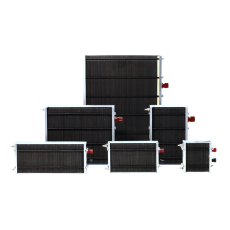
Fuel cells have been researched and developed for use in several applications since the early 1990's. Fuel cells can be used for portable, backup, transportation, and stationary power applications. This article briefly describes some of these uses for fuel cells.
1.0 Portable Power
Portable fuel cells are lightweight, long-lasting, portable power sources that prolong the amount of time a device can be used without recharging. In comparison, secondary (rechargeable) batteries have battery charger systems that consist of AC chargers that require an outlet to be charged or DC chargers that will recharge your batteries from other batteries. Rechargeable batteries are not practical for certain portable and military electronic applications because they can be heavy and not meet the power requirements. Some portable fuel cell applications include laptops, cellular phones, power tools, military equipment, battery chargers, unattended sensors, and unmanned aerial and underwater vehicles.
A notable difference between rechargeable batteries and fuel cells is that a fuel cell needs a continuous supply of fuel. Some fuel types that have been used with fuel cells include metal hydrides, methanol, formic acid, ethanol, and of course, hydrogen. For portable fuel cells, methanol and ethanol can be supplied to the fuel cell as fuel or a fuel reformer can also be attached to the fuel cell package.
1.1 Backup Power
Backup power systems provide power when the primary power source is disrupted. Fuel cells used for backup power come in many sizes and types and typically use hydrogen as their fuel. Backup fuel cells can be commercialized more quickly than other fuel cells because they do not depend on upon the implementation of a hydrogen infrastructure. Some backup power applications include computer systems, manufacturing facilities, homes, and utility substations.
The PEM fuel cell with compressed hydrogen fuel is the most popular fuel cell type used for backup power applications. There are many fuel options available such as compressed hydrogen, liquid hydrogen, propane, natural gas as well as many other fuel types. An electrolyzer system is a good option for backup power applications because it can produce hydrogen on demand. The electrolyzer can be used with electricity generated by solar panels, a wind source, a nuclear source or electricity generated by the local power company.
 1.2 Transportation Applications
1.2 Transportation Applications
Fuel cells can be used for many transportation applications including automobiles, buses, utility vehicles, and scooters and bicycles. Many fuel cell demonstration vehicles have been created for each of these vehicle types.
1.2.1 Automobiles
Most automobile manufacturers have been developing fuel cell vehicles for at least a couple of decades. Automotive manufacturers are interested in fuel cell technology because it is a "next-generation" technology that could have fuel reproduced from local sources and low or zero emissions. Fuel cell vehicles usually use compressed hydrogen as the fuel type, although several manufacturers have also demonstrated a fuel cell vehicle with methanol. Automotive fuel cells can have one or more of the following:
• A fuel cell can be used for start-up only or to provide all of the power to a vehicle.
• A fuel cell supplies a constant amount of power, so for vehicle acceleration and other power increased power needs, additional devices are connected to the fuel cell.
• A fuel cell can be used as the secondary power source.
The operating temperature of an automotive fuel cell is between 60 to 80ºC due to the utilization of the polymer membrane, which limits the temperature to below 100ºC.
1.2.2 Buses
Buses have successfully demonstrated the use of fuel cells for transportation purposes into the commercial vehicle market. The difference between buses and automobiles are the power requirements, space availability, operating regimen, and refueling sites. Buses require more power than automobiles and get more wear due to constant stops and starts. Large quantities of hydrogen can also be stored on-board buses easily because of the available area of a bus.
Fuel cell buses have an advantage over diesel buses because they have zero emissions. This is critical in heavily populated and polluted cities. Many bus manufacturers began demonstrating their first fuel cell buses in the early 1990s. Like the fuel cell automobiles, the fuel type most often used is compressed hydrogen, although methanol and zinc have been demonstrated. Fuel cell buses have been running in British Columbia, California, Amsterdam, Barcelona, Hamburg, London, Luxembourg, Madrid, Porto, Reykjavik, Stockholm, and Stuttgart.
1.2.3 Utility Vehicles
Utility vehicles have been a successful early adapter of fuel cell technology because the competing technology for these vehicles is often lead-acid batteries which require maintenance and charging. Demonstrations of fuel cell utility vehicles show that they offer lower operating cost, reduced maintenance, lower downtime, and extended range. Fuel cell–powered utility vehicles can also be operated indoors because there are no emissions. Utility vehicles that can be powered by fuel cells are forklifts, golf carts, lawn maintenance vehicles, airport movers, wheelchairs, unmanned vehicles, boats, small planes, submarines, small military vehicles. The first fuel cell utility vehicles were demonstrated in the early 2000s. Like the fuel cell automobiles, the fuel type most often used is compressed hydrogen, although methanol, metal hydrides, and sodium borohydride have also been demonstrated. The most common type of fuel cell used is the Proton Exchange Membrane Fuel Cell (PEMFC), but Direct Methanol Fuel Cells (DMFC) and Alkaline Fuel Cells (AFC) have also been used.
 1.2.4 Scooters and Bicycles
1.2.4 Scooters and Bicycles
In countries with large populations, scooters, and bicycles are popular forms of transportation. Fuel cells have been positively demonstrated for these applications with compressed hydrogen and methanol. Hydrogen storage is still an issue for these vehicles; therefore, metal hydrides and electrolyzers have been researched during the last decade.
Many manufacturers demonstrated their first fuel cell scooters and bicycles in the early 2000s, which is later than many of the fuel cell automobile and bus demonstrations. Like the fuel cell automobiles, the fuel type most often used is compressed hydrogen, although methanol, metal hydrides, and zinc have also been demonstrated. The most common type of fuel cell used is the PEMFC, but DMFCs and Zinc-Air Fuel Cells (ZAFC) have also been used.
1.3 Stationary Power Applications
Fuel cells for stationary applications have been used commercially for over twenty years. The main difference in these fuel cell systems is the choice of a fuel cell and fuel and the heating and cooling of the stacks. Stationary fuel cells can be used as a primary power source. It is often used to power houses that are not connected to the grid or to provide supplemental power.
In hybrid power systems, fuel cells can be connected to photovoltaics, batteries, capacitors, or wind turbines, providing primary or secondary power. Fuel cells can also be used as a backup or energy power generator providing power when the grid is down. A standalone system may require another source of energy for peak periods. These can be batteries and supercapacitors, or a combination of both.
Many manufacturers began demonstrating their stationary power stations in the 1990s. Unlike other fuel cell applications, the fuel type most often used is natural gas. Other common fuel types are propane, compressed hydrogen, bio-gas, methanol, oil-based fuels, town gas, synthesis gas, digestor gas, and land fill gas. The most common stationary fuel cell type is the Proton Exchange Membrane Fuel Cell (PEMFC), but Solid Oxide Fuel Cells (SOFC), Molten Carbonate Fuel Cells (MCFC), Alkaline Fuel Cells (AFC), and Phosphoric Acid Fuel Cells (PAFC) have also been used. The United States, Germany, and Japan have the greatest number of stationary fuel cell power stations.
Summary
Fuel cells for portable, backup, automotive, or stationary power applications have been demonstrated, and there are some fuel cells commercially available in these categories. DMFCs and PEMFCs are commonly used for portable applications. Backup power often uses PEMFC fuel cells with compressed hydrogen storage. Automobile applications can the PEMFC and DMFC fuel cell types. Fuel cell buses use PAFCs, PEMFCs, DMFCs, and ZAFCs. Utility vehicles, scooters, and bicycles primarily use PEMFCs. Stationary power applications use SOFCs, MCFCs, AFCs, and PEMFCs. The fuel cell design such as power output, heat balance, efficiency, size, weight, and fuel supply may be slightly different for each application, and must be customized to suit the required load.

 Posted by
Posted by
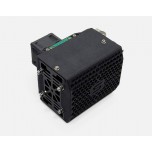
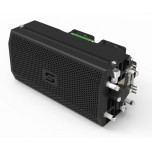
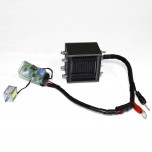
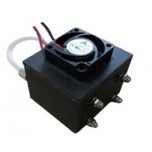





























Enter the code in the box below: